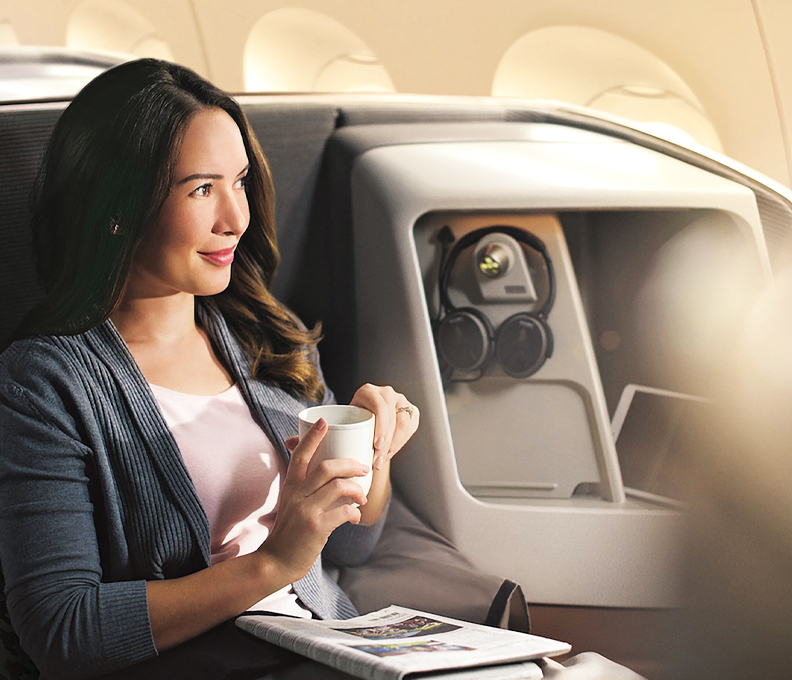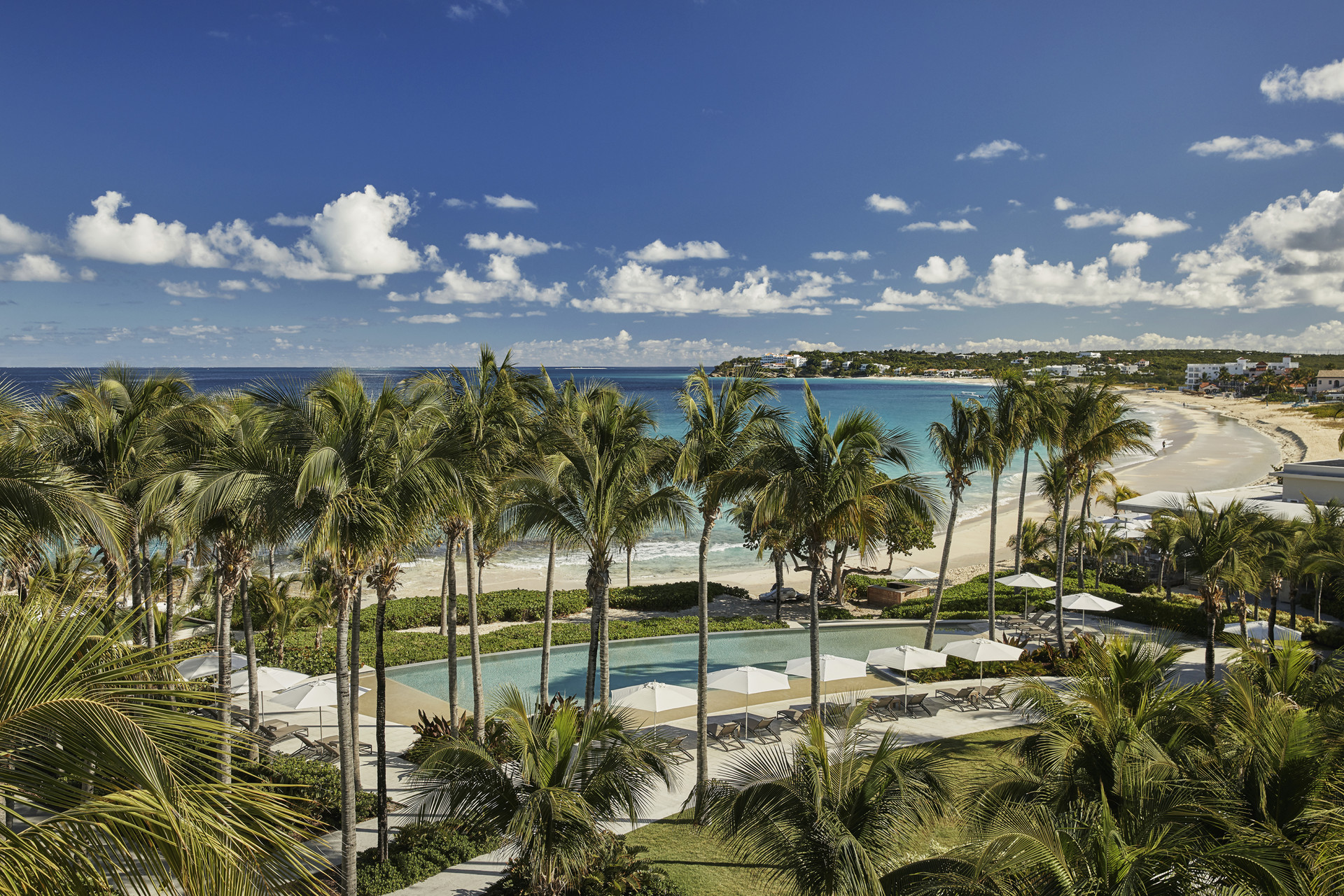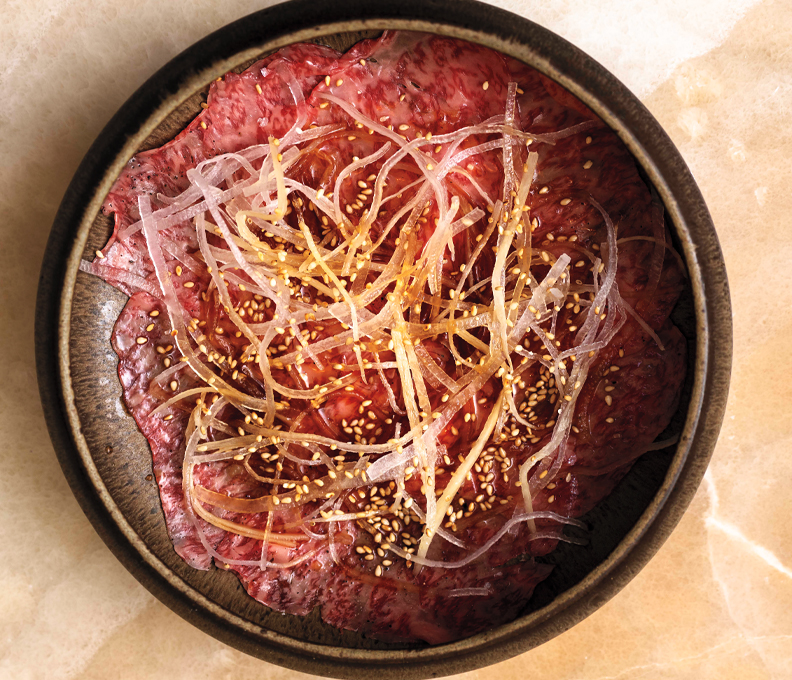The Sofitel Mexico City Reforma Reflects the Past and Future of Mexico’s Capital
One of the tallest buildings in the city, the hotel makes its presence known long before guests walk through its antique entrance
March 3, 2023
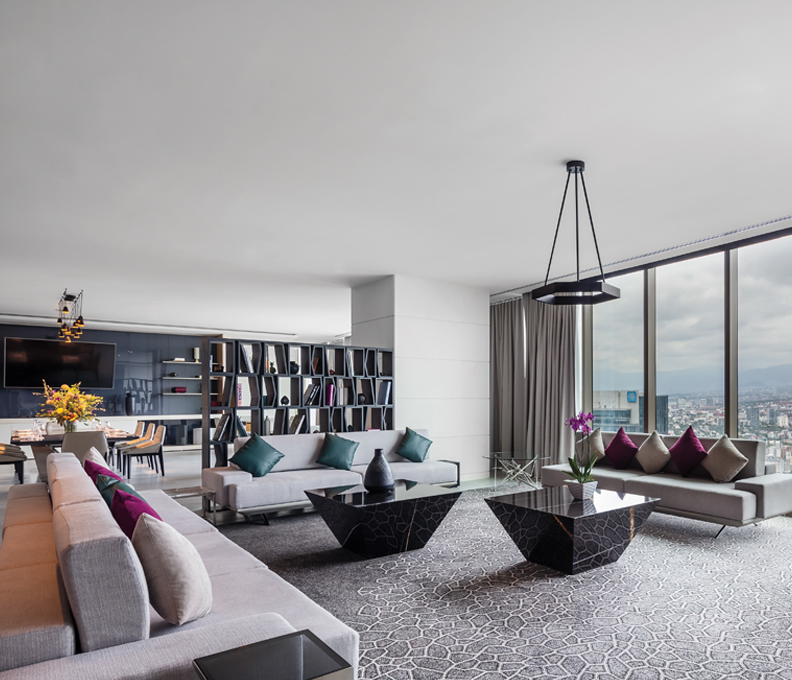
Imperial Suite / Photo: Courtesy of Sofitel Mexico City Reforma
The towering facade of the Sofitel Mexico City Reforma clearly illustrates the contrast between the reverent preservation of the old and the anxious embrace of the new in Mexico’s capital. While the property’s base retains the structure of the 1930s home that once stood in its spot on the historic Paseo de la Reforma, today its interior is home to Freehouse, an intimate bar that stays open past midnight for guest nightcaps.
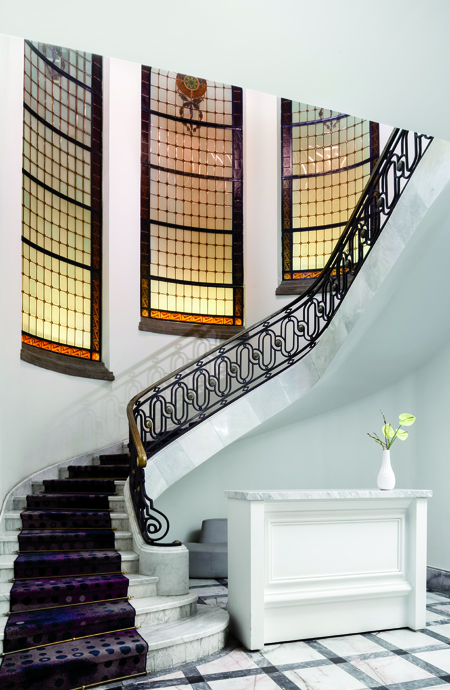
Motor lobby / Photo: Courtesy of Sofitel Mexico City Reforma
Hovering above the second-floor speakeasy are 40 stories of polished blue-green glass. One of the tallest buildings in the city, the Sofitel makes its presence known long before guests walk through its antique entrance. It is attention-grabbing, but on my way to the hotel, another nearby landmark catches my eye.
El Ángel, the prodigious Angel of Independence that towers above the world-famous Reforma thoroughfare, is the first chill-inducing confirmation that I’ve finally made it to one of the greatest cities in the world. At the front desk, I’m surprised to be greeted not as “señora” or “señorita,” but as “madame.” I remember this is the first Mexico property for the French luxury Sofitel brand—an indication of Mexico City’s increasing appeal to outside companies, entrepreneurs and business travelers.
Freelance digital nomads and wealthy executives alike have descended upon the city since the onset of the pandemic (as evidenced by the handful of helipads visible from my suite). Business is booming, but the migration has not come without tension, as locals have increasingly protested that they are getting priced out of their own capital city.
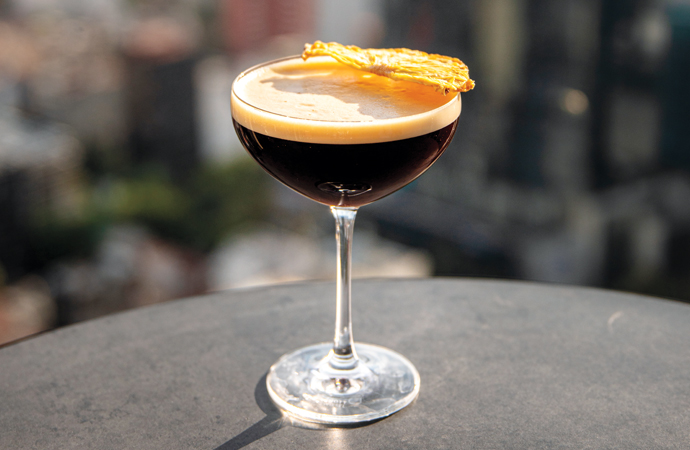
Cityzen espresso martini / Photo: Courtesy of Sofitel Mexico City Reforma
These ongoing changes only highlight the importance of preserving Mexico’s contributions. As a Latina from a Cuban-Salvadoran household, I was exposed early to Mexico’s cultural exports. My dad constantly played black-and-white films from the Golden Age of Mexican cinema in our home—especially those starring his favorite artist, Mexican singer and actor Jorge Negrete. And to the Salvadoran side of my family—as for millions of fans around the world—ranchera singer Vicente Fernández is an icon.
I get my chance to connect with those roots during a hot-air balloon ride above the Teotihuacan pyramids, home to the Temple of Quetzalcóatl, the Pyramid of the Moon and the Pyramid of the Sun, vestiges of a Mesoamerican city that was the largest in the Americas some 2,000 years ago. The one-hour ride is arranged by the Sofitel’s concierge team, which can also arrange dozens of other immersive experiences for guests, including a culinary bicycle tour through the surrounding neighborhoods, a boat ride through the floating gardens of Xochimilco, and even a day trip to the vineyards and hot springs of San Miguel de Allende, some four hours northwest of CDMX. As we rise with the sun above the pyramids, our pilot plays music by some of the most beloved artists from Mexico and its diaspora, including Fernández and, my childhood favorite, Selena.
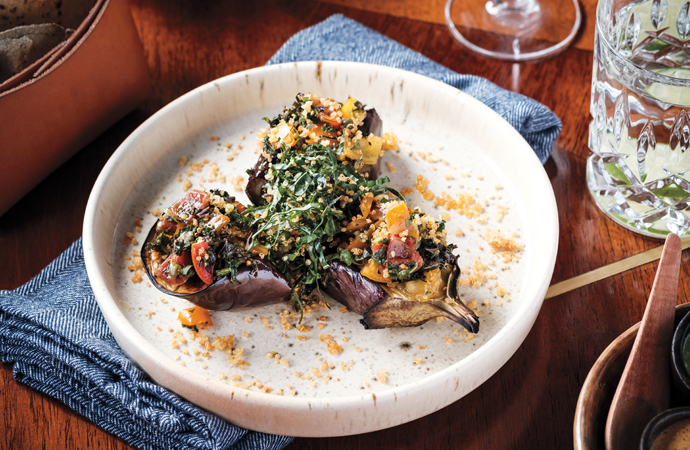
Grilled eggplant at Balta restaurant / Courtesy of Sofitel Mexico City Reforma
Back on terra firma, my whirlwind tour of Mexico City includes lunch at Polanco’s Carmela & Sal, where chef Gabriela Ruiz Lugo showcases flavors from Mexico’s southeastern Tabasco region, where she grew up. Dessert is the highlight here: a chilled slice of mango topped with coconut pudding and vanilla-bourbon-infused tapioca pearls.
That night, I’m treated to another delight: a meal at Pujol, Mexico City’s most coveted dinner reservation. The menu, sealed with a wax stamp, tells me chef Enrique Olvera has aged the mole madre for nearly eight years—2,898 days, to be exact. I savor the chocolate flavor and its spicy kick and save the menu as a keepsake.
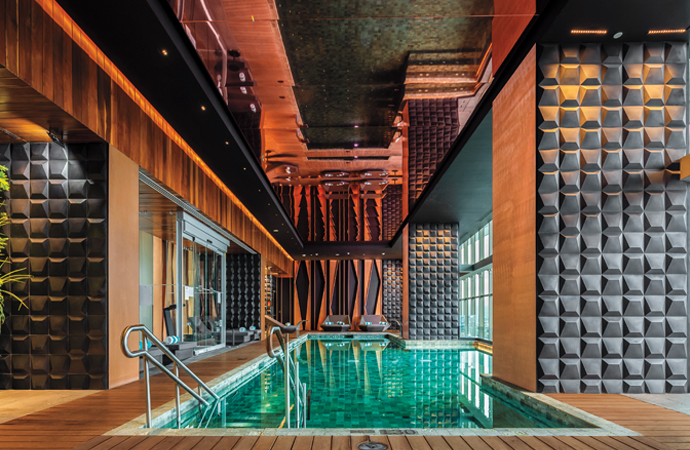
Pool on the 38th floor / Photo: Courtesy of Sofitel Mexico City Reforma
On my last night in Mexico City, I take in bird’s-eye views of the landmark that first welcomed me to this cultural mecca. From the Sofitel’s 38th-floor pool, I sip champagne and lose myself in the meditative glow of cars circling the lavender-lit Ángel.
After a glass (okay, two), I retreat to my spacious room, my bed offering floor-to-ceiling views of the city’s illuminated skyline. I push the button on my headboard to close the blackout curtains and blinds, and awake to jets darting outside my windows in the morning, a festive Independence Day display.
I can see the floats from the windows at the Sofitel’s check-in desk, but I head down into the street to experience the parade with locals. Before I leave, I take one last walk to El Ángel and hope she’ll welcome me back soon to this magnificent city.

